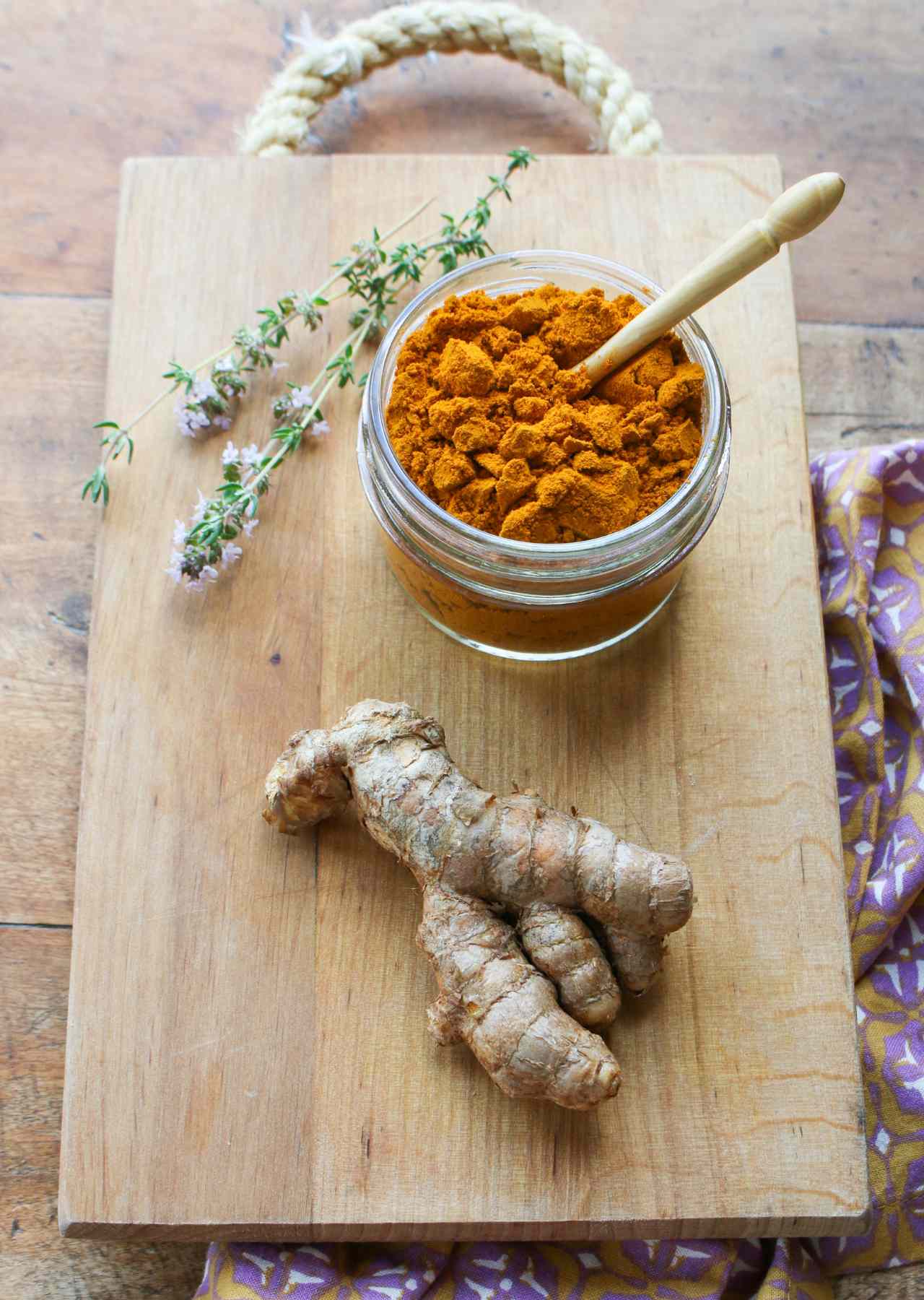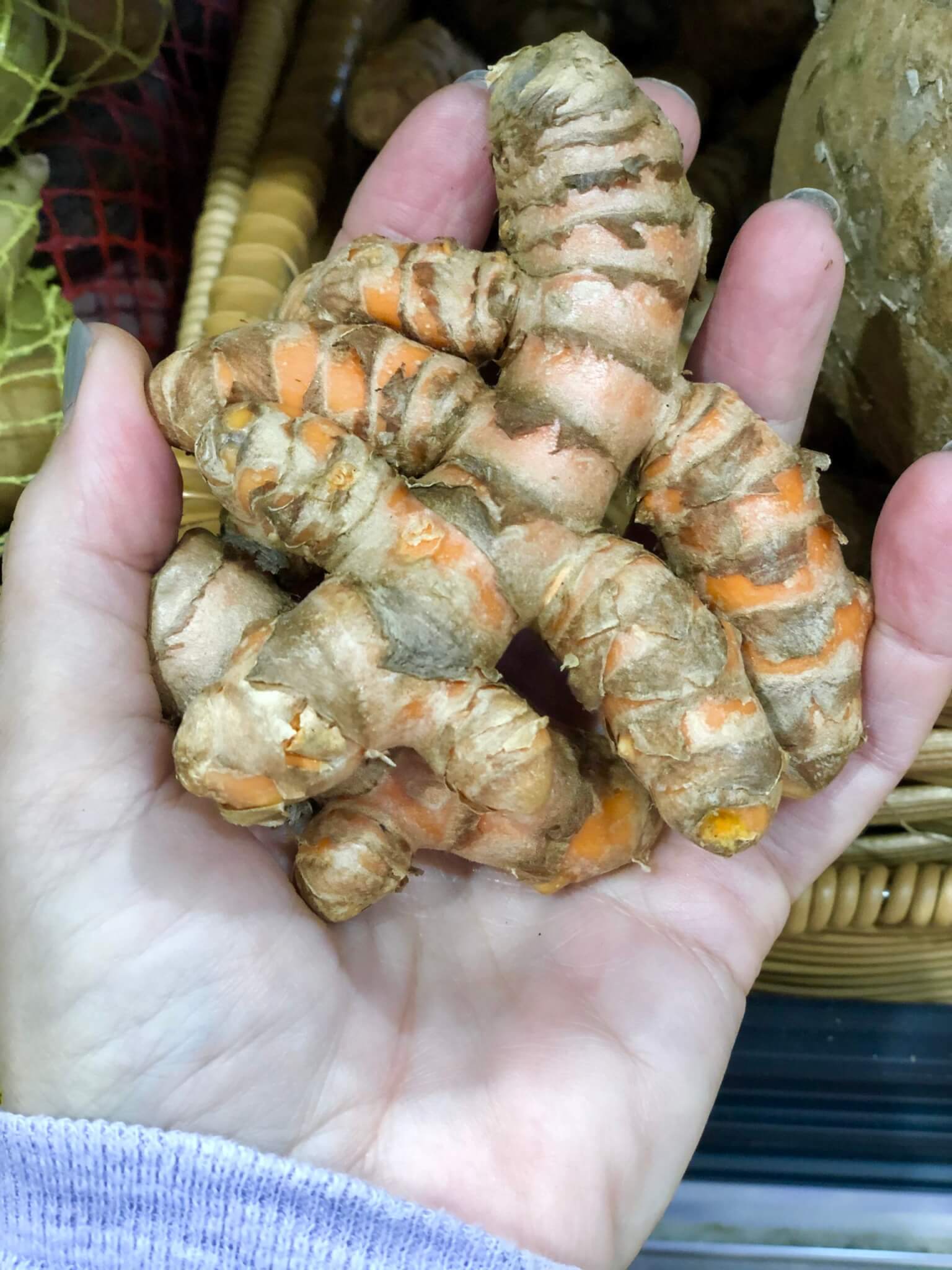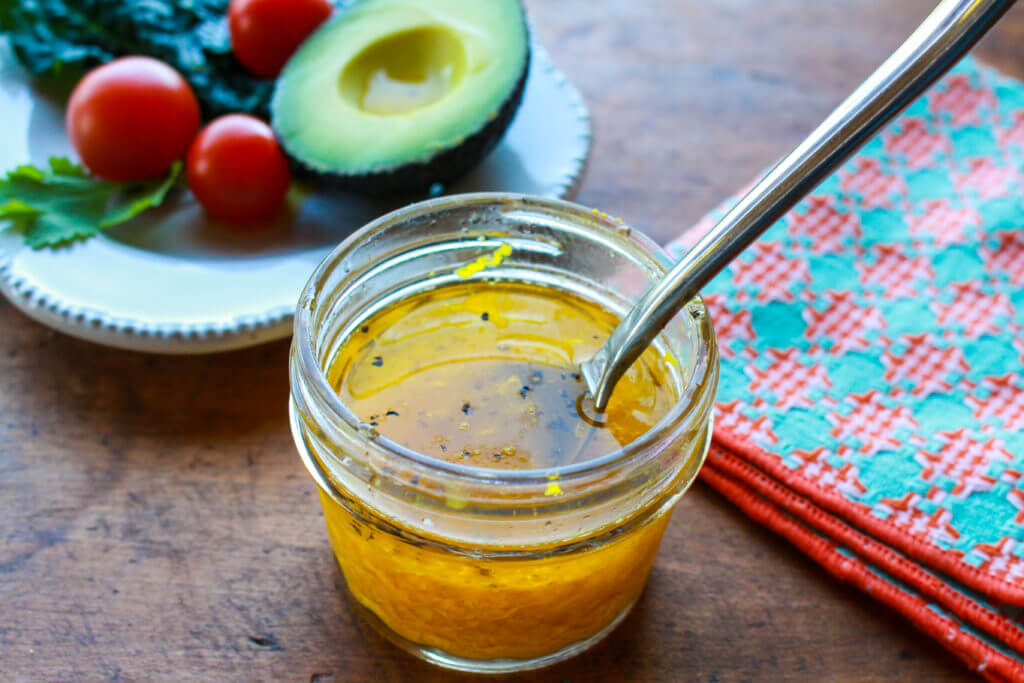How to Use Fresh Turmeric Root in the Kitchen

Wondering how to use fresh turmeric root from the turmeric plant in the kitchen? I’m sharing everything you need to know, along with recipes featuring this healthy golden spice.
Have you spied a knobby light brown covered root in the supermarket and wondered what to do with it? Well, you’ve just encountered fresh turmeric root, and it’s a spice worth getting to know because of its versatility and health benefits. In its fresh form, turmeric has a mildly spicy-sweet, earthy flavor and potent golden orange color, and it’s useful in so many recipes in the kitchen. And let’s face it, turmeric is having its moment these days! I remember the first time I heard about the health benefits of turmeric at a nutrition conference many years ago, when a nutrition researcher discussed its anti-inflammatory potential in fighting disease. Flash forward to today and it seems everyone is doing this yellow spice, in supplements, smoothies, and savory dishes, desserts, and beyond. That’s why I’m answering your top questions on how to use this spice in the kitchen. And be sure to check out my blog on the top ways to use turmeric in your kitchen here.

What is Fresh Turmeric Root?
Fresh turmeric (Curcuma long) comes from the root of a flowering plant in the ginger family. The turmeric plant is a perennial native to India and Southeast Asia, which requires a warm, rainy environment to grow. When you buy ground turmeric in the spice aisle of the supermarket, it comes from the dried turmeric root. Turmeric is a key component of Indian spice blends and curry powder—in fact, it’s what gives curry powder that gorgeous amber-orange shade and warm flavor. Increasingly, you can find it in markets, today. Turmeric roots resemble fresh ginger roots, but they have a bright orange flesh when you peel or slice into them. What does turmeric taste like? It has a bold flavor with a peppery-sweet taste and earthy, citrusy appeal.

What are the Health Benefits of Turmeric?
The active ingredient in turmeric is called curcumin, which has antioxidant and anti-inflammatory properties. Turmeric has the ability to help protect the body from oxidative stress and chronic inflammation and inflammatory conditions, such as arthritis, joint problems, and allergies. While we need more research on the health benefits to turmeric, it has been linked with improvements for degenerative eye conditions, metabolic syndrome, arthritis, high cholesterol levels, anxiety, and kidney problems. You can gain benefits of turmeric by adding it to your meals. If you are considering taking turmeric supplements, it’s a good idea to discuss it with your physician, as—with all supplements—it can interfere with other medications and conditions. Turmeric is also more bioavailable to your body when it is prepared with vegetable oils (containing lecithin) in a recipe, prepared with piperine (found in black pepper), and heated.


Cooking with Turmeric
Turmeric root, when fresh, can last in your fridge for a few weeks. All you have to do is peel it and add it to your favorite dishes by either finely chopping or shredding it. I like to use a microplane or zester to shred my fresh turmeric into a variety of dishes, including salads, sauces, vinaigrettes, side dishes, entrees, and baked goods. When you use it in its fresh form, turmeric is milder, so you can use a whole root (about 3 inches long) in a single recipe. I love to use fresh turmeric in soups, stews, stir-fries, curry dishes, smoothies, salads, roasted vegetable dishes, veggie burgers, baked goods, turmeric latte, and more. You can also make a simple ginger turmeric tea by steeping a sliver of fresh turmeric and fresh ginger in boiling water. Power up on this healthy ingredient with three of my favorite plant-based recipes using fresh turmeric.
Top 3 Recipes with Fresh Turmeric

Turmeric Mango Carrot Smoothie
You won’t believe the gorgeous orange color of this potent turmeric, mango, carrot smoothie, which is oh-so creamy (thanks to cashews). Plus, it’s an antioxidant powerhouse, compliments of its powerful ingredients. Whip it up for an easy breakfast, light meal on the run, or healthy snack. Bottoms up!

Carnival Squash Soup with Fresh Turmeric
I’m in love with creamy, squash soups, like this Carnival Squash Soup with Fresh Turmeric, which is completely plant-based and gluten-free. The sweet carnival squash pairs so well with the warm, earthy, spiciness of turmeric root in this scrumptious soup. The color of this soup is a fabulous amber-chartreuse shade, which depends a bit on the color of your squash. Each time I make this soup, the color is slightly different—such is the variety found in Mother Nature! The fresh turmeric adds a truly intense color to the soup, too.

Turmeric creates the foundation for a colorful, flavorful simple vinaigrette, which accents pungent greens as well as Mediterranean-inspired salads. One of the most flavorful things you can do with fresh turmeric root is to stir it into a simple vinaigrette, which can be used in salads, as a marinade for tofu, or a topping for wraps and salads. Try this simple turmeric vinaigrette over your next salad bowl.
For other plant-powered recipes using turmeric, check out these:
Pistachio Turmeric Rice Power Bowl
Scrambled Turmeric Tofu with Mushrooms and Greens
Turmeric Baked Tofu
Korma Turmeric Rice Veggie Power Bowls
Pistachio Turmeric Rice Power Bowl






the recipe for turmeric mango smoothie- it is unclear if you are using 1 inch of turmeric or 11
You use one (1-inch) turmeric root for this recipe.
I grow white turmeric at a farm we bought recently, acres of it. Can I use it the same as the orange? Is their a flavor difference?
Yes, you can definitely use it! I wish I could try it myself, as it’s pretty rare to find here in the US. It may not have the exact same nutritional properties as the orange turmeric, but it still has beneficial compounds. Ginger is typically used instead of white turmeric (they are in the same family). The flavors are different. Let me know how you find it works in your cooking!
Is the curcumin more effective if the turmeric root is cooked? As in golden milk or in a stew or soup?
I have added it to my juicing- where it is raw.
Which is best to receive the most benefit? From the fresh root?
Thank you.
Research has shown that heating enhances the overall antioxidant and anti-inflammatory properties of curcumin. Turmeric is moderately sensitive to heat, short cooking times (under 15 minutes) do not destroy turmeric, but will in fact increase the bioavailability of curcumin. So heating turmeric in a golden latte or adding it to your cooking, such as in soups/stews will maximize its absorption by the body.
Please send:
Plant Based Toolkit
Vegan Toolkit
Please email your request to admin@sharonpalmer.com. Thanks!